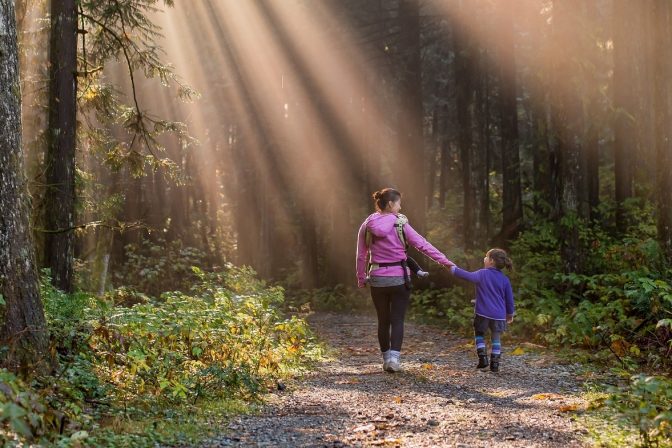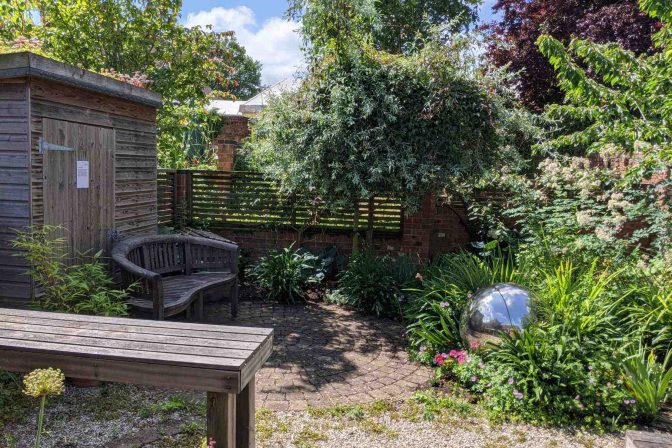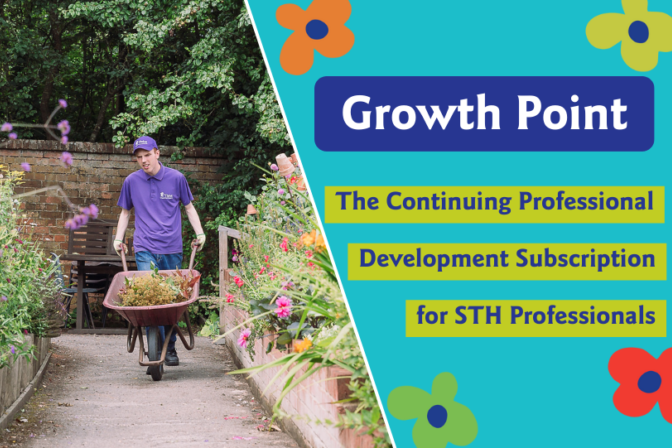Here is a great way to get stuck in(to) the mud!
When you are gardening, be it weeding, planting bulbs, in the allotment harvesting or just potting a plant, think about and write afterwards how it feels to explore the soil with your senses.
You may normally wear gardening gloves, but if conditions and your health allows (some people may need to avoid the organisms in soil due to impaired immune systems), take your gloves off for this exercise.
You may wish to make notes on paper as you do each stage or use a Dictaphone or voice recording on your mobile or other device to capture your thoughts at each stage. Add in any illustrations to your notes if you wish and like to sketch.
At each stage, make notes/record your experiences. Do this where you are. Do not rush this experience. The notes do not have to be coherent. They can be a list of words, phrases, sentences, a poem, sketches - see what comes. I often find I doodle more when words don’t quite come, or as an accompaniment to poetry drafts or notes.
Some questions you may wish to ask yourself to stimulate your writing can include:
- What can you feel on your skin? What is the temperature?
- What is the texture of the earth-are there stones in it? Worms or other small creatures?
- Is the soil moist from rainfall or dry due to lack of rain?
- How does the soil smell?
- Are there any snails or worms or other creatures that you can see?
If you cannot use your hands easily, then use your forearm, elbow or an unsocked foot (this may be less easy to do). Do only what you feel comfortable to do and what feels safe to do so hygiene- wise. Be mindful to wash and dry hands / feet thoroughly afterwards.
Go through these stages:
- First, stroke your fingers (or toes) lightly in the soil as if you are swirling water in a bath to mix bath foam. Just do this on the top surface. Do this for as long as you wish, but for at least 3 minutes.
- Now, start to dig your fingers into the soil; just a few centimetres below the surface. Think about the emotions you are experiencing as you ‘dig deeper’. How does your body feel? Shift position if you need to.
- Now, scoop up some soil in your fingers. Raise your hand a few inches if you can, then let the soil drop from your fingers. Experiment with holding the soil in your palm and letting it fall from a clasped palm, an open hand tipped, your fingertips.
- Watch the soil fall. Does it fall in clumps, or is it dust-like? Are there stones? What can you hear? In your writing, you could introduce some poetic devices such as simile and metaphors, by considering what the falling soil reminds you of anything you can compare it to? Note down some similes and metaphors e.g the soil falls like dust from an ancient undisturbed box
- Hold the soil to your nose. What is the smell? Think of some words and jot them down e.g. earthy, light, heavy, pungent
Now close your eyes and repeat all of the above stages without the sensory input of vision. What impact does this have on the texture, temperature, smell, weight of the soil? What emotions do you feel when you cannot see what you are doing? How does your body feel? Shift position if you need to.
Digging for gold
Now, go over your notes again. Use phrases and words to create a piece of memoir, a short story or a poem.
List poems can be satisfying introductions to writing poems. For example, you may wish to fill in the gaps below using what you experienced above to create a list poem. This can encourage you to create some metaphors and similes and other imagery:
In my hands, I hold the earth and feel …
In my hands, I hold the earth and smell …..
In my hands, I hold the earth and sense ….
In my hands, I hold the earth and feel the weight of….
or
In my hands, I hold… it feels like…..it smells of/like
Play around with different ways of starting your list poem.
For inspiration, have a look at the link to the poem Digging by Irish poet, Seamus Heaney. He is writing about writing, but with the metaphors and language of the land and relating to memories of his father and boyhood.
Once you finished your work, read it back to yourself and be proud of what you have created. You may want to share it with others!
Inspiration is everywhere outside. It can encourage you to be mindful and look inwards, something we hardly have time to do in our fast paced lives. Welsh poet W.H. Davies (1871-1940) puts it well in his oft-quoted poem, Leisure.
Happy writing!













